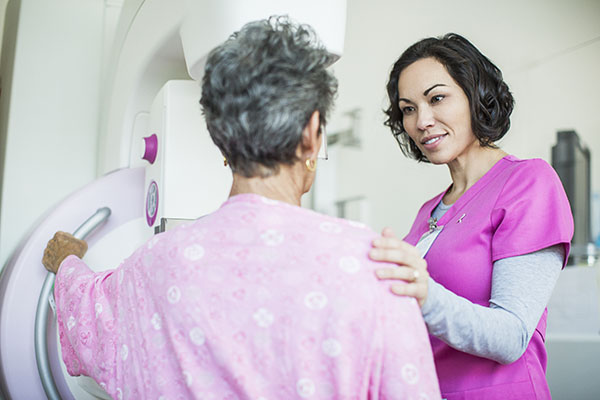A destination for comprehensive breast care
October 15, 2023Categories: Newsletter
Tags: Womens Health
St. Mary Cancer Center is renowned for its use of advanced technology as well as compassionate, skilled care for patients—particularly those suffering from breast cancer.
 In fact, St. Mary Medical Center’s cancer program is accredited by the National Accreditation Program for Breast Centers, whose standards address the full continuum of care, from prevention to survivorship and end of life.
In fact, St. Mary Medical Center’s cancer program is accredited by the National Accreditation Program for Breast Centers, whose standards address the full continuum of care, from prevention to survivorship and end of life.
Breast surgeon Kristin Krupa, MD, and her partner, Russell Reisner, MD, are both fellowship-trained. “Dr. Reisner completed a surgical oncology fellowship and I did a breast surgical fellowship,” Dr. Krupa says. “That’s very important; it means we have special training in how to take care of breast cancer.”
Both are skilled in oncoplastics, a surgical technique that aims to achieve better cosmetic results after cancer surgery. They also make a point of staying on top of the latest literature and research.
In conducting surgery, Drs. Krupa and Reisner use cutting-edge technology, such as the Magseed®, a device that’s placed into the breast ahead of a lumpectomy to localize the area where surgery needs to be performed. The technology helps the surgeons to remove as little tissue as possible.
St. Mary’s breast surgeons also excel in the nipple-sparing mastectomy technique. For patients to be a candidate, “the cancer can’t involve the nipple and there needs to be a somewhat smaller breast size,” Dr. Krupa says. “But we do offer the option, and a lot of general surgeons aren’t trained in this.”
Some breast cancer patients will require a so-called axillary lymph node dissection, where all lymph nodes are removed in the armpit on the same side as the cancer. “With this surgery, there’s a 15-20% risk of lymphedema—swelling of the arm,” Dr. Krupa says.
But one of the plastic surgeons at St. Mary, John Fernandez, MD, is skilled in a minimally invasive technique that decreases lymphedema risk. In certain patients, Dr. Fernandez can also reconstruct the breasts using tissue from other parts of the body, such as the abdomen or inner thigh.
Should I worry?
Dr. Krupa suggests that anyone who has noticed one or more of the following should have a physician take a look:
- Breast lump or bump
- Nipple discharge
- Skin changes such as redness or peeling of the skin
However, she also emphasizes that some breast cancer patients won’t have any symptoms, which is why screening mammograms are so important.
Those with an average risk of breast cancer should get a screening mammogram once a year starting at age 40. Those at higher risk, due to genetic mutations or a family history of breast or ovarian cancers, should start the screening process earlier.
If you’re unsure of your risk level, Dr. Krupa suggests starting a conversation with your primary care provider or ob/gyn, who should perform a risk assessment.
Learn more about the St. Mary Breast Center or request an appointment for a mammogram or call 215.710.4130.
